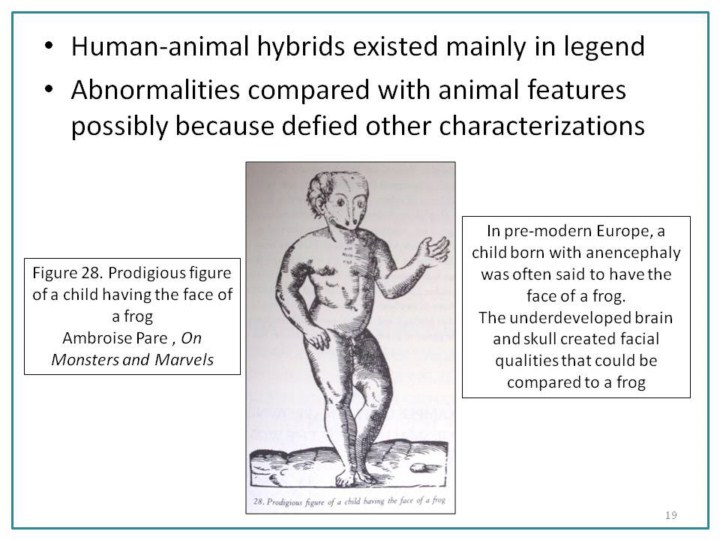 |
Although
defects were often compared to animal features (such as the head of a frog
or a cow), most births were not attributed to bestiality.30
Instead, people used these comparisons in order to describe and
conceptualize the abnormalities. Describing defects through the use of
analogies and comparisons has been helpful to modern-day researchers. We
know that ancient authors described infants as having a frog-like condition.
Today, we understand that an anencephalic individualís head can appear to
look like an amphibian. Therefore, contemporary scholars can hypothesize
that anencephaly has occurred in ancient and medieval times
|
